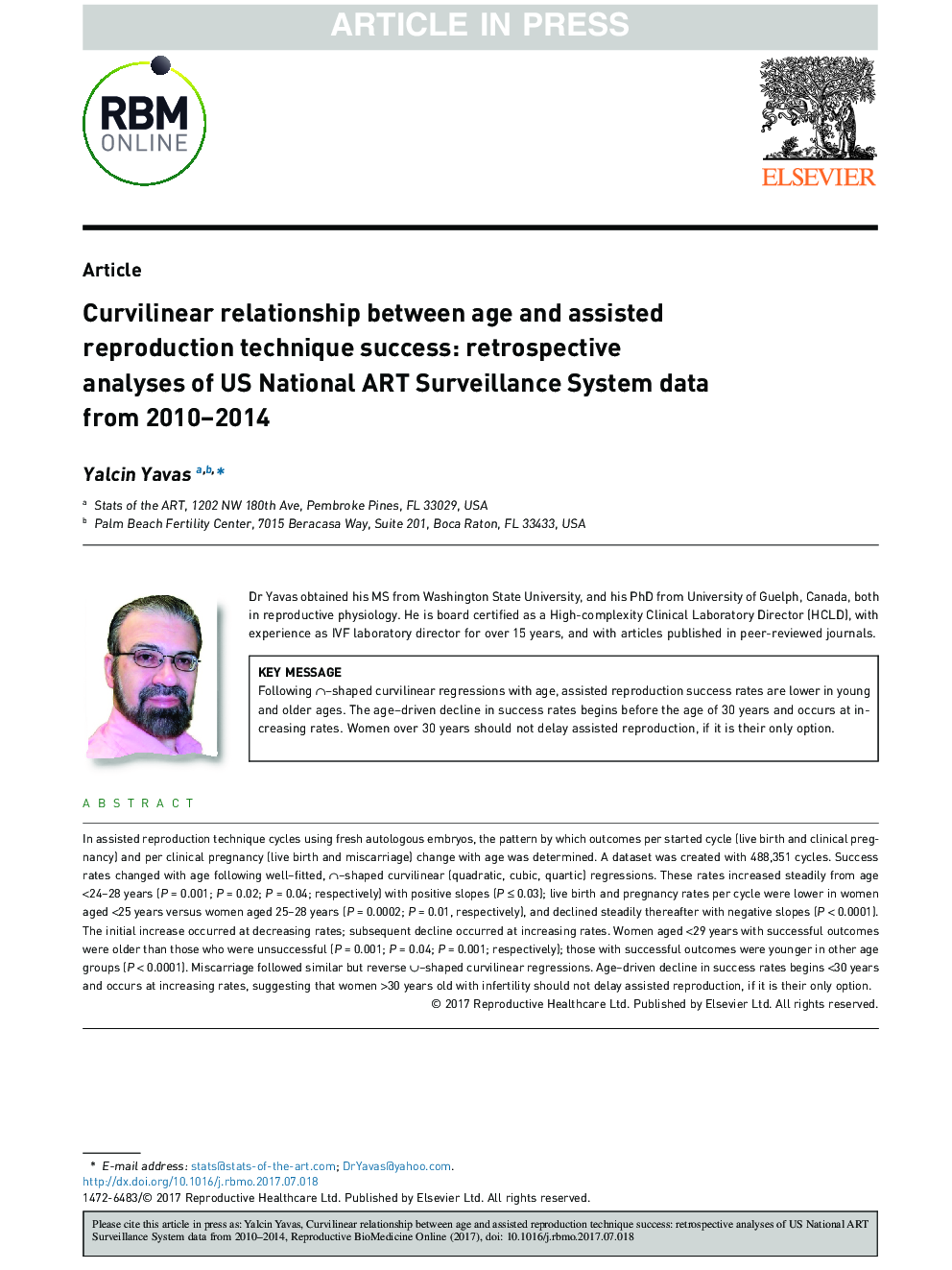| Article ID | Journal | Published Year | Pages | File Type |
|---|---|---|---|---|
| 8784117 | Reproductive BioMedicine Online | 2017 | 12 Pages |
Abstract
In assisted reproduction technique cycles using fresh autologous embryos, the pattern by which outcomes per started cycle (live birth and clinical pregnancy) and per clinical pregnancy (live birth and miscarriage) change with age was determined. A dataset was created with 488,351 cycles. Success rates changed with age following well-fitted, â©-shaped curvilinear (quadratic, cubic, quartic) regressions. These rates increased steadily from age <24-28 years (P = 0.001; P = 0.02; P = 0.04; respectively) with positive slopes (Pââ¤â0.03); live birth and pregnancy rates per cycle were lower in women aged <25 years versus women aged 25-28 years (P = 0.0002; P = 0.01, respectively), and declined steadily thereafter with negative slopes (Pâ<â0.0001). The initial increase occurred at decreasing rates; subsequent decline occurred at increasing rates. Women aged <29 years with successful outcomes were older than those who were unsuccessful (P = 0.001; P = 0.04; P = 0.001; respectively); those with successful outcomes were younger in other age groups (P < 0.0001). Miscarriage followed similar but reverse âª-shaped curvilinear regressions. Age-driven decline in success rates begins <30 years and occurs at increasing rates, suggesting that women >30 years old with infertility should not delay assisted reproduction, if it is their only option.
Related Topics
Health Sciences
Medicine and Dentistry
Obstetrics, Gynecology and Women's Health
Authors
Yalcin Yavas,
